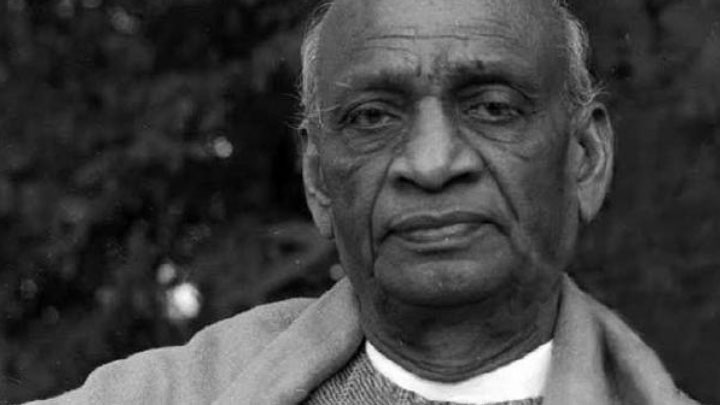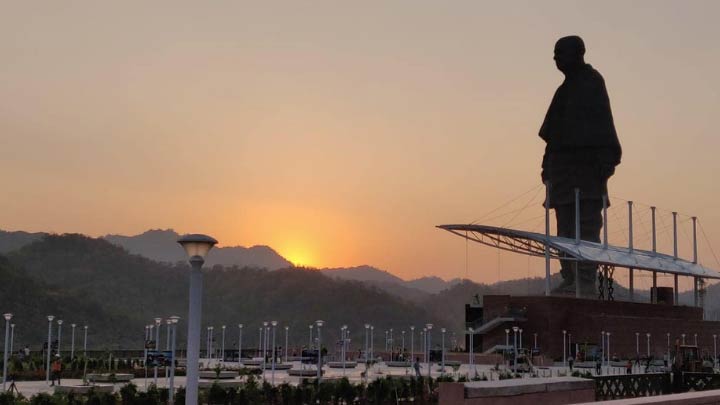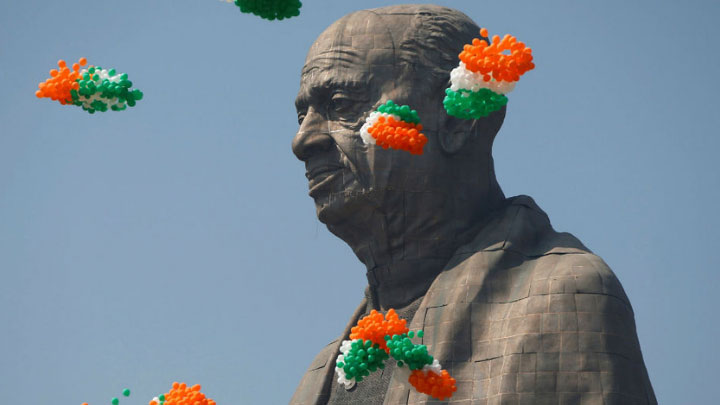“It is the prime responsibility of every citizen to feel that his country is free and to defend its freedom is his duty. Every Indian should now forget that he is a Rajput, a Sikh or a Jat. He must remember that he is an Indian and he has every right in his country but with certain duties.” - Sardar Vallabhbhai Patel
“If it was not for him, we’d have to take visas to visit each other.”
While you must have heard about this statement doing the rounds of various media, one has to remember and not forget who Sardar Vallabhbhai Patel was and what all he did for our nation.
Sardar Patel was made the Home Minister of India at the country's most difficult period, it’s him who somehow managed to keep India from disintegrating after partition.
When Pakistan was created, the separation had led to massive killing, violence and bloodbath between Hindus and Muslims. It was Sardar Vallabhbhai Patel who understood this and made sure that we stand united as one nation.
Well-known and reputed as the “Iron Man of India”, Sardar Vallabhbhai Patel, was the person behind integrating various states in the post-independence times. He is the reason why India is a nation of cultural diversity and secular integrity.
In his honour, on his birthday, i.e. 31st October 2018, PM Narendra Modi unveiled the world’s tallest statue of an Indian historical figure, “Statue of Unity” which is to remind everyone about India's existence and its integrity.

While inaugurating the statue, Prime Minister Narendra Modi pointed, “Imagine for a moment that if Sardar Patel had not worked towards uniting the nation, Indians would have to get a visa to see the Gir lions and tigers... and shiv bhakts would need a visa to do puja at the Somnath temple...people would also need a visa to see the Charminar in Hyderabad.”
If we can travel freely today from one place to another, it is because of Sardar Vallabhbhai Patel. He led the path for India, walking on which we are talking with the world on our own terms now.
Earlier in history and even today, there have been many people who always thought that India could never remain united due to its diversity and tried to work out ways until it fell apart. Sardar Vallabhbhai Patel showed how it is done.
From Kutch to Kohima, from Kashmir to Kanyakumari, Sardar Patel united the country and if it wasn’t for him, there would be no rail line from Kashmir to Kanyakumari.
It’s believed that he used Kautilya's wisdom and Shivaji Maharaj's bravery to keep India together. How to grow from strength to strength is something to learn from him, as it shows what a great resolve Sardar Patel had.
Sardar Vallabhbhai Patel had said, “Infighting was the reason for India's subordination by foreign powers; never again will India make the same mistake and never will India again inaugurates.”

Who was Sardar Patel?
Sardar Patel was the first Deputy Prime Minister of India and became one of the most successful barristers of the country. Sardar Patel wasn’t interested in politics initially, but after meeting Gandhi in 1917, he was motivated to quit his job and join the Independence struggle.
Sardar Patel exercised Swaraj (self-rule) by organizing peasants in Gujarat in a non-violent civil disobedience against the British, as Patel worked extensively for the rights of minorities and women, and fought against untouchability and caste discrimination.
Patel integrated more than 550 princely states around the time of Independence and came to be known as the ‘Iron Man of India’ and in 2014, India began observing Rashtriya Ekta Diwas (National Unity Day) on Sardar Patel’s birth anniversary (October 31).

About the Statue of Unity
- PM Narendra Modi unveiled the Statue of Unity, built as a tribute to freedom movement icon, Sardar Vallabhbhai Patel on his 143rd birth anniversary.
- Statue of Unity is a symbol of India's integrity, India's resolve, India's determination and India's unity - ‘Ek Bharat is Shreshth Bharat’.
- It is 182m high, making it the tallest in the world, built at a cost of Rs. 2,989 crore, Sardar Vallabhbhai Patel adorns a traditional dhoti and shawl, towering over the Narmada River.
- The statue has been designed by Padma Bhushan-winning sculptor Ram V Sutar and has been built by Larsen and Toubro and the state-run Sardar Sarovar Narmada Nigam Ltd. It took about 250 engineers and 3,400 labourers to construct the statue in 33 months.
- The Gujarat government said the 185 families which were moved to make way for the statue, had been compensated and given 1,200 acres (475 hectares) of new land.
- The statue will have a viewing gallery at the height of 193 metres from the sea level which can accommodate 200 visitors at a time. This gallery, at 153 metres height, will offer a view of the Sardar Sarovar Dam, its reservoir, and the Satpura and Vindhya mountain ranges
- Online booking to visit the Statue of Unity has opened with Rs. 350 admission fee for the 153-metre-high observation deck, opening to visitors on 3rd November 2018.

How did he keep India united?
As per the published article by Times Now News, this was explained well-in-depth.
In 1947, when India won freedom from the British Empire, one of the major things that remained was to stitch over 550 princely states together and keep them together.
The question remained, but how?
Who would pick the arduous job of welding a nation together from hundreds of dominions?
Mahatma Gandhi had could seek only one man – Sardar Vallabhbhai Patel!
Politically speaking, there were two Indias.
One was directly ruled by the British and the other were the regions that had accepted the rule of the Crown but maintained an independent status. This is where Patel called a critical meeting of all the rulers in the country.
It was during the conference, that Sardar Patel convinced everyone for joining hands and creating one nation. While advocating the union, he assured all kings with a substantial position in the affairs of the nation and where they could influence a wider policy framework.
Sardar Patel nudged the rulers to “move with the times” and clearly highlighted the what would happen if the everyone didn’t work together for being one. He adopted a three-fold strategy for all those who were convinced and an “Instrument of Accession” was prepared by the department.
Under this, Rulers were told to consent to only three subjects – Defence, External Affairs and Communication. Sardar Patel felt that if these three were common, along with an overarching Constitution, the unity of India would be achieved.
The second step was the execution of the Instrument of Accession – replacing previous Standstill deals that the states had with the British Crown with the new agreement.
The third was ‘unionisation’ or ‘democratisation’ of the states. This simply was a masterstroke. Patel understood that the last point was the most vital, as it would be through the path of democracy that elected governments would eventually come to replace autocratic rulers and extinguish any scope of rebellion.
Finally, the strategy succeeded, Sardar Patel proved Gandhi right and successfully achieved, the impossible task of creating the territorially integrated India, that today you & I live in and the world so-popularly knows of.

However, one can’t overlook, that the money which was invested in this and the expansive use of government framework and time spent on pursuing this project shows how misplaced the government’s priorities are.
There have been questions on whether this all was necessary right now or not?
With already a lot of work left to do, from galvanising its economy and industry, boosting direct foreign investment, mending its fraying secular fabric and reinforcing the autonomy of public institutions that are the guardians of democracy, BJP Government already had its handsful and yet, chose to erect Sardar Patel’s statue.
Honouring the sentiments may not need a timeline, but could this be delayed, are the counter-comments that have caught our attention too.
What do you think about it?
Let us know in the comments section below.
If you liked our take on it, ensure to give it a thumbs up and share forward.






